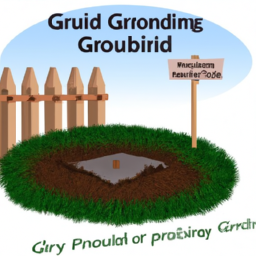How to Keep Groundhogs Out of Garden Tips and Tricks
How To Keep Groundhogs Out Of Garden
How to Keep Groundhogs out of your Garden
We've all heard the old saying, A groundhog in the garden is like a thief in the night. Unfortunately, groundhogs are capable of being destructive and can wreak havoc in your garden if not dealt with properly. To help protect your garden from these pesky rodents, here are 8 primary threads to get you started on keeping them out of your garden.
Identify Groundhogs and Their Habits
The first step to keeping groundhogs out of your garden is to get familiar with them. Groundhogs belong to the rodent family and are known to dig tunnels and nest in garden areas. They feed on a variety of vegetation such as grass, nuts, corn, and vegetables. Understanding these habits can help you to identify the problem and effectively implement a plan for keeping them away.
Identify and Eliminate Entrance Points
Groundhogs will often create entrances to their burrows in the garden. To help stop them from entering your garden, make sure to identify and locate any potential burrow entrances and fill them with a mixture of gravel and dirt. This will help to create an impenetrable barrier that prevents groundhogs from entering.
Install Mesh Wire or Fencing
Another way to protect your garden from groundhogs is to install mesh wiring or fencing around the perimeter. This will help to create a physical barrier that makes it difficult for groundhogs to access your garden. Make sure to bury the fence several inches beneath the ground so that groundhogs cannot gain access by tunneling underneath.
Attach Lights and Noises
Groundhogs are easily startled by sudden movements and noises. To discourage groundhogs from entering your garden, attach bright lights or motion-sensor lights around the perimeter. You can also attach loud devices that make a loud sound when they sense motion. This will help to deter groundhogs from entering your garden.
Set Traps and Relocate Groundhogs
If you have an infestation of groundhogs in your garden, it is important to set traps and relocate the animals away from your property. Setting traps is the most effective way to get rid of groundhogs, as they often return after being relocated. Make sure to consult with your local wildlife experts before trapping and relocating groundhogs.
Repel Groundhogs with Deterrents
Using certain deterrents can also help to deter groundhogs from entering your garden. Deterrents such as chili peppers, castor oil, and garlic spray can help to keep groundhogs away. Place these deterrents in areas where groundhogs are likely to enter and make sure to re-apply the deterrents regularly to ensure that they are effective.
Remove Debris and Natural Food Sources
Another way to discourage groundhogs from invading your garden is to remove any potential food sources and debris from the area. Groundhogs will often scavenge through vegetable gardens and compost piles to feed on natural food sources. Removing these sources of food can help to reduce their food supply and make them less likely to invade your garden in the future.
Keep Garden Areas Clean and Neat
Groundhogs are drawn to gardens because they are often messy and unkempt. To prevent groundhogs from entering your garden, make sure to keep the area clean and tidy. Remove any debris, weeds, and long grasses that may be a source of food and shelter for the groundhogs. This will make the area less appealing to groundhogs and can help to deter them from entering your garden.
In Summary
Groundhogs can cause serious damage to your garden if not dealt with properly. To protect your garden from these pests, there are 8 primary methods to consider. Get familiar with groundhogs and their habits, identify and eliminate entrance points, install mesh wiring or fencing, attach lights and noises, set traps and relocate groundhogs, repel groundhogs with deterrents, remove debris and natural food sources, and keep garden areas clean and neat. With these suggestions, you can effectively protect your garden from groundhogs and prevent any potential damage.

Previous Page
Next Page
